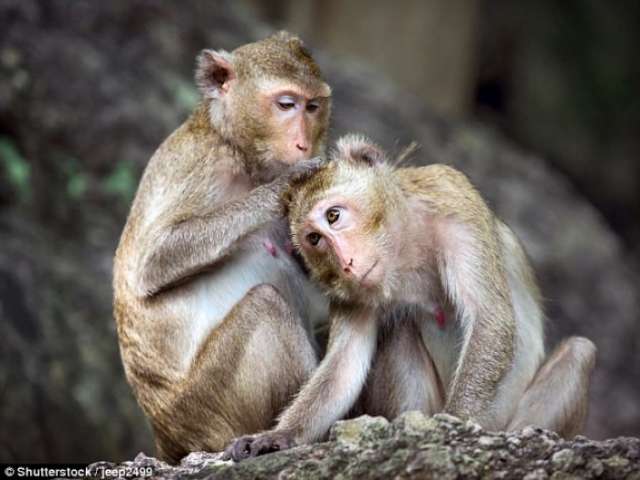The brain network identified in macaques is located in the same areas of the brain associated with theory of mind in humans, suggesting the human brain circuitry may have evolved from macaques.
Scientists call our ability to understand another person's thoughts -to intuit their desires, read their intentions, and predict their behavior - theory of mind.
To understand the theory of mind in monkeys, researchers based at The Rockefeller University conducted a study using functional magnetic resonance imaging (fMRI) to identify parts of the brains of rhesus monkeys that become active when they watched different kinds of videos.
The researchers showed the monkeys these videos while scanning their brains and tracking their gaze.
Some of the videos showed objects, such as monkey toys, colliding or physically interacting.
Other videos showed macaques interacting with those same objects by playing with them, and some showed macaques interacting socially with other macaques: Either grooming, playing or fighting.
They analyzed the fMRI data to determine exactly which portions of the monkeys' brains responded to physical or social interactions.
They scans revealed that areas containing special brain cells called mirror neurons - which fire when an animal performs an action such as grasping a stick, or sees another animal performing the same action - lit up when the macaques watched other macaques playing with toys.
The macaques' mirror neuron regions were also active when the animals watched videos of other monkeys interacting socially, and even when they watched objects colliding with other objects.
Dr Julia Sliwa, a researcher who co-authored the study, said that this suggests the motor neuron system, which also exists in the human brain, could be more involved than thought in understanding a variety of both social and non-social interactions.
The researchers also expected that areas of the brain that respond selectively to specific visual shapes, including faces, bodies, or objects, would be activated when the monkeys watched videos showing those shapes - and that did happen.
But what surprised the researchers was that the body-selective areas of the macaques' brains got an extra boost when the animals watched videos of monkeys interacting with objects.
The face-selective areas of their brains became even more active in response to videos of monkey-on-monkey social interactions.
According to the researchers, this suggests that the same parts of the brain that are responsible for analyzing visual shapes might also be partially responsible for analyzing both physical and social interactions.
But what intrigued the researchers the most is that additional areas of the brain, far removed from those face- and body-selective areas, also became more active in response to social interactions.
They identified a part of the network that responded exclusively to social interactions, remaining nearly inactive in their absence.
'That was both unexpected and mind-boggling,' says Dr Winrich Freiwald, a researcher at The Rockefeller University who co-authored the study.
He says that no other study has shown evidence of a network in the brain going dark when denied its preferred input.
This network is located in the same areas of the brain that are associated with theory of mind in humans - areas that are activated only when we reflect on the thoughts of others.
Dr Sliwa says the findings could represent an 'evolutionary precursor' to the neural network that produces theory of mind in human brains.
More about: #monkey
















































